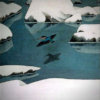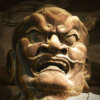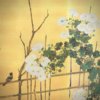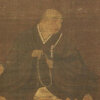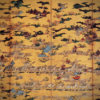Tsuji Kakō: Kyoto Painter with Extraordinary Range of Styles
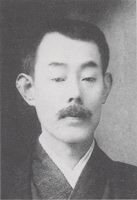
Tsuji Kakō was born in 1898 into a family of Kyōto Yūzen painters. He studied under the tutelage of Kōno Bairei while assisting in the family business. He was ten years old at the time. At the Bairei School, he won an award at the National Industrial Exhibition, and along with Kikuchi Hōbun, Takeuchi Seihō, and Taniguchi Kōkyō, he was known as one of the Four Great Painters of the Bairei School. However, his success in the art world seems to have been delayed by his younger age compared to Seihō and Hōbun. This may have been due to the fact that, although Kakō learned the realistic style of the Maruyama and Shijō schools at the Bairei School, he was also keen to study the techniques of the Kanō and Rimpa schools and was slow to establish his own style. In fact, if you look at the works of Tsuji Kakō today, you will find a wide variety of styles.
For example, the work “Iwashimizu”, which won the third prize at the first Bunten exhibition in 1907, is a historical genre painting of a pilgrimage to the Iwashimizu Hachimangū shrine and a portrait in the Yamato-e style.

His earlier works for the Shinkobijutsuhinten exhibition were also historical genre paintings based on Noh plays and tales, and he would have been a unique figure in the Kyōto art world, which mainly focuses on realistic depictions of nature in the four seasons.
The following year he won the third prize at the second Bunten for ‘Gods Shouting with Joy’, another historical portrait depicting the myth of Amano-Iwato.
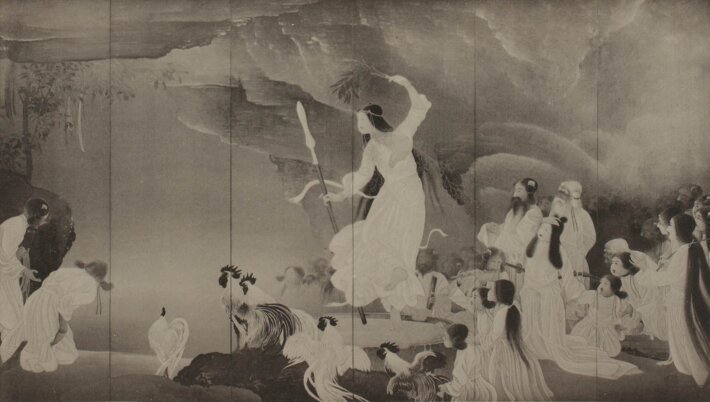
He did not exhibit at the third and fourth Bunten exhibitions, but at the fifth Bunten, he won the third prize for “Pine and Moon”.

This work is often referred to as his masterpiece, but the style of this and his previous work is completely different, and the change in style is astonishing. He was awarded a special prize at the Bunten and Teiten exhibitions for his painting ‘Haniwa’ in 1916 and finally became a judge at the 5th Teiten in 1924.

However, Kakō’s style in the Taishō period was full of romantic expression and a sense of novelty, as exemplified by his work at the second Teiten exhibition in 1920, “Morning in Tōraizato, Evening in Mannendai”.
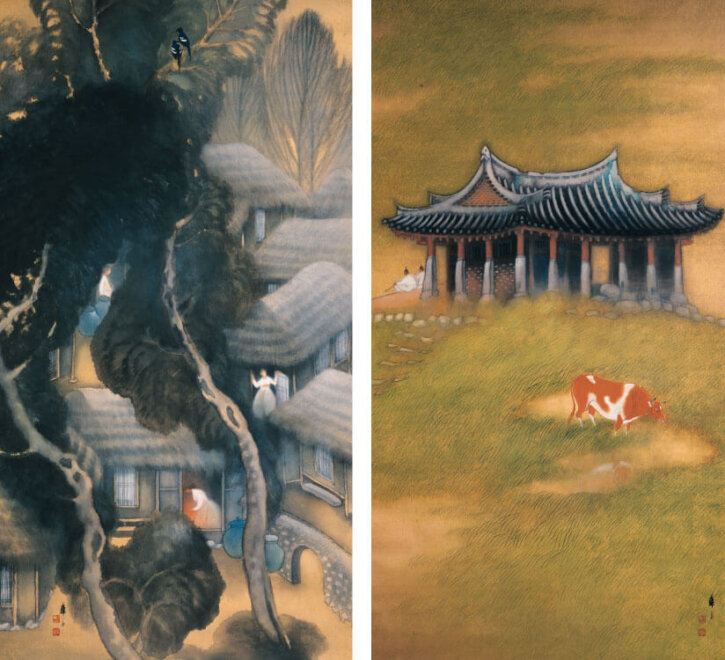
In 1925, he became a member of the Imperial Academy of Fine Arts, and the following year, he was nominated as the principal of the Kyōto Municipal College of Painting. In his later years, he developed his own style of Zen painting. He died in 1931.
Two Cranes
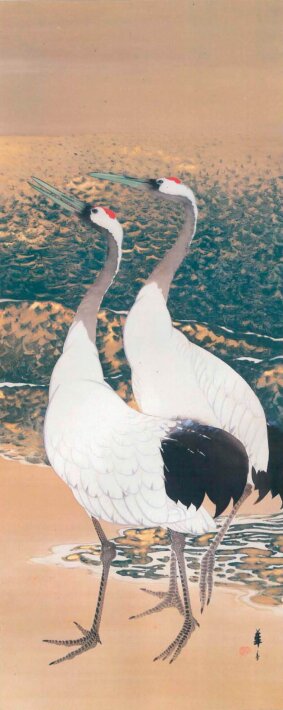
This painting of “Two Cranes”, one male and one female, is probably an omen of good fortune. The design suggests that there should be another painting on the left, showing a sunrise and pine trees on the shore. The cranes are depicted in the style of Shijō and Maruyama and are well executed. In contrast, the waves in the background are painted with a quick brushstroke, which is rough but quite effective when viewed from a distance. This is a bold technique, and from this, we can assume that the painting was made around 1924.
Bamboo

“Bamboo” is a large painting of six panels. The bamboo forest fills the painting on gold ground. The rhythmic expression of the bamboo is interesting. This work seems to have been made in the same Taishō period, but it may be an earlier work than the previous one (Two Cranes). The exact date is unknown. Kakō’s ability to make the most of the gold background in this bamboo painting explains his early emergence as one of Bairei’s Four Great Painters.

